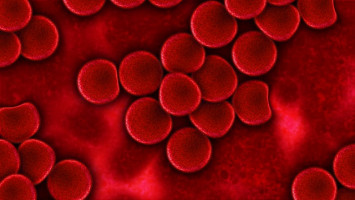
Despite the promise of new medications that promote cancer cell death in people with acute myeloid leukaemia, leukemic cells often adopt features that let them evade the drugs’ effects within a year.
Now, new research using human tissue samples and mouse models has found that resistance of leukaemia cells to a widely prescribed drug called venetoclax occurs because of a rapid increase in the breakdown and turnover of mitochondria, structures inside the cell that help power its functions.
In addition to their role in producing energy, mitochondria also tell cells to die under certain adverse conditions.
This process of “programmed cell death” often goes wrong in cancer.
Damaged mitochondria can also undergo a form of “self-eating” termed mitophagy that prevents them from sending “death signals.”
Led by scientists at NYU Langone Health and its Perlmutter Cancer Center, the study showed that mitophagy helps leukaemia cells to evade the killing effects of venetoclax, a drug in a class of medications known as BH3 mimetics.
Publishing in the journal Cancer Discovery online April 24, researchers found that the levels of several genes associated with mitophagy were increased in 20 leukaemia patient samples compared with normal controls.
The level of these genes was even higher in samples from leukaemia patients with drug resistance than in those leukemic patients who were not.
Particularly notable was the increased expression of the gene for Mitofusin-2 (MFN2), which codes for a key protein in the outer mitochondrial membrane.
Further experiments using mice into which bone marrow from acute myeloid leukaemia patients was transplanted showed that the drug chloroquine, a known mitophagy inhibitor, restored the ability of venetoclax to kill the cancer cells.
“Overcoming resistance to BH3 mimetic drugs like venetoclax is of unique clinical significance because these medications are often used for treating people with acute myeloid leukaemia,” said study co-lead investigator Christina Glytsou, PhD, a former postdoctoral researcher at NYU Grossman School of Medicine and now an assistant professor at Rutgers University.
“Acute myeloid leukaemia is notoriously difficult to treat, with fewer than a third of those affected living longer than five years after their diagnosis, so it is important to maximise the impact of existing therapies,” said study co-lead investigator Xufeng Chen, PhD, an instructor in the Department of Pathology at NYU Grossman.
“Our preclinical findings suggest that combining BH3 mimetics like venetoclax with either MFN2 or general mitophagy inhibitors could possibly serve as a future therapy for acute myeloid leukaemia, as current drug treatments are stalled due to drug resistance,” said study senior investigator Iannis Aifantis, PhD.
Aifantis, the Hermann M. Biggs Professor and chair of the Department of Pathology at NYU Grossman and Perlmutter, says the research team plans to design a clinical trial to test whether chloroquine, when used in combination with venetoclax, prevents drug resistance in people with acute myeloid leukaemia.
Speaking about other study results, the researchers say they not only found that MFN2 was overly active in people with drug-resistant disease, but also that cancer cells exposed to similar cell-death-inducing compounds demonstrated a doubling in mitophagy rates.
Additional testing in cancer cells engineered to lack MFN2 showed increased sensitivity to drugs similar to venetoclax compared with cells that had functional MFN2.
The new study and previous research by the team showing misshapen mitochondria in drug-resistant leukemic cells confirmed that increased mitophagy was the source of the problem.
Acute myeloid leukaemia, the most common form of adult leukaemia, originates in the bone marrow cells and involves the rapid buildup of abnormal blood cells.
The blood cancer results in the deaths of more than 11,500 Americans annually.
Current treatments include chemotherapy and a limited number of targeted drug therapies. Bone marrow transplantation has also been used when other options fail.
Source: NYU Langone Health / NYU Grossman School of Medicine
We are an independent charity and are not backed by a large company or society. We raise every penny ourselves to improve the standards of cancer care through education. You can help us continue our work to address inequalities in cancer care by making a donation.
Any donation, however small, contributes directly towards the costs of creating and sharing free oncology education.
Together we can get better outcomes for patients by tackling global inequalities in access to the results of cancer research.
Thank you for your support.